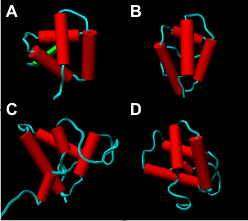AllFam Statistics
| Last update: | 2017-03-07 |
| Allergens total: | 1042 |
| Allergens with AllFam family assigned: | 959 |
| AllFam families: | 151 |
| Pfam domains in allergens: | 216 (1.3% of all domains) |
| Underlying databases | |
| WHO/IUIS Allergen Nomenclature: | 2017-03-06 831 allergens 1220 sequences of isoallergens and variants |
| AllergenOnline: | v17 (2017-01-18) 808 allergen groups 2035 sequences |
| Pfam: | Pfam 30.0 (June 2016) 16,306 entries |
The AllFam database is a resource for classifying allergens into protein families. It is based on allergen data from the WHO/IUIS Allergen Nomenclature Databse supplemented by data from AllergenOnline - the FARRP allergen database and on protein family data from the Pfam database.
AllFam is maintained by the Biochemistry and Bioinformatics group, headed by Christian Radauer and located at the Department of Pathophysiology and Allergy Research of the Medical University of Vienna, Austria. AllFam is updated quarterly.

Structures of allergens from the prolamin superfamily. A: soybean hydrophobic seed protein (Gly m 1), B: peach non-specific lipid transfer protein (Pru p 3), C: castor bean 2S albumin (Ric c 3), and D: wheat 0.19 α-amylase inhibitor (Tri a 28).
In recent years, it has become clear that most allergens belong to a limited number of protein families. Classifying allergens into protein families can help answering questions such as: What makes a protein an allergen? Which allergens are cross-reactive? However, it has to be kept in mind that (1) not every member of an allergen-containing protein family is allergenic and (2) not all allergenic members of a protein family are cross-reactive.
You can browse lists of allergen families restricted by allergen source (plants, animals, fungi, bacteria) and route of exposure (inhalation, ingestion etc.) or search for specific allergens, sources or protein families. Every allergen family entry is linked to a description of the biochemical properties and the allergological significance of the family members as well as a list of key references related to this family. The description also contains links to Pfam and Wikipedia.
For each allergen family, you can browse a list of allergenic members. Each allergen entry is linked to the corresponding records in the WHO/IUIS Allergen Nomenclature and AllergenOnline databases.
Allergens are distributed into few protein families and possess a restricted number of biochemical functions.
J Allergy Clin Immunol 2008, 121, 847-52.
[PubMed]
[Full Text]